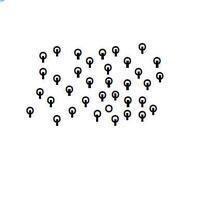While visual search for targets within a complex scene might benefit from using augmented-reality (AR) head-mounted display (HMD) technologies helping to efficiently direct human attention, imperfectly reliable automation support could manifest in occasional errors. The current study examined the effectiveness of different HMD cues that might support visual search performance and their respective consequences following automation errors. Fifty-six participants searched a 3D environment containing 48 objects in a room, in order to locate a target object that was viewed prior to each trial. They searched either unaided or assisted by one of three HMD types of cues: an arrow pointing to the target, a plan-view minimap highlighting the target, and a constantly visible icon depicting the appearance of the target object. The cue was incorrect on 17% of the trials for one group of participants and 100% correct for the second group. Through both analysis and modeling of both search speed and accuracy, the results indicated that the arrow and minimap cues depicting location information were more effective than the icon cue depicting visual appearance, both overall, and when the cue was correct. However, there was a tradeoff on the infrequent occasions when the cue erred. The most effective AR-based cue led to a greater automation bias, in which the cue was more often blindly followed without careful examination of the raw images. The results speak to the benefits of augmented reality and the need to examine potential costs when AR-conveyed information may be incorrect because of imperfectly reliable systems.
翻译:在复杂场景中搜索目标时,使用增强现实(AR)头戴式显示器(HMD)技术可以帮助有效地引导人类注意力,但不完美可靠的自动化支持可能会导致偶尔出现错误。本研究研究了可能支持视觉搜索绩效的不同HMD提示的有效性,以及在自动化错误之后的各自后果。56名参与者在一个房间中搜索包含48个物体的3D环境,以查找在每次试验前查看的目标对象。他们可以搜索未辅助或辅助于三种不同类型的HMD提示之一:指向目标的箭头,突出显示目标的俯视图小地图和始终可见的表示目标物体外观的图标。对于一个组的参与者,提示在17%的试验中是不正确的,而对于第二个组则是100%正确的。通过对搜索速度和准确性的分析和建模,结果表明,描绘位置信息的箭头和小地图提示比描绘视觉外观的图标提示更有效,无论是整体还是在提示正确的情况下。然而,在提示错误的罕见情况下存在权衡。最有效的基于AR的提示会导致更大的自动化偏见,使提示更容易被盲目地跟随,而不是仔细检查原始图像。结果提到了增强现实的好处,并需要在AR传达的信息可能不正确的情况下考虑潜在的成本。




